Short Takes: The 1961 Kenny Blackwell Doubleneck
I could have just as easily titled this article “Short Takes: The First Rickenbacker Doubleneck” because…well, it is! But those who know this guitar call it the “Kenny Blackwell guitar” so…we’ll stick with that.
So who is Kenny Blackwell? He’s the guy who custom ordered the Kenny Blackwell doubleneck, obviously. Yeah, I got that much, but who IS he? Well, in the late 1950s/early 1960s Kenny was the occasional bassist for the Brook Twins (who were actual twins but whose actual last name was Middlebrook). So, you know, not exactly a household name.
But Ron Middlebrook, the Brook Twins’ steel player, was a Rickenbacker endorsee and it appears Kenny was known to F.C. Hall because there are multiple photos of him with Rickenbacker instruments in the Rickenbacker archives—a couple of which made it into Martin and Paul Kelley’s book Rickenbacker Guitars: Pioneers of the Electric Guitar.
As a side note, although the Brook Twins never hit it big Ron Middlebrook went on to have a long career in music book authorship and publishing, with over twenty-five titles to his name. He also ended up owning the Kenny Blackwell doubleneck longer than Blackwell did!
So Kenny played bass and occasionally a little guitar for the Brook Twins and in 1961 he got the idea that it would be handy to have a guitar that was both a bass AND a guitar. And since he had “some” sort of relationship with Rickenbacker he was able to sit down with them and specify what he was thinking. And so in November 1961, this is what he got.
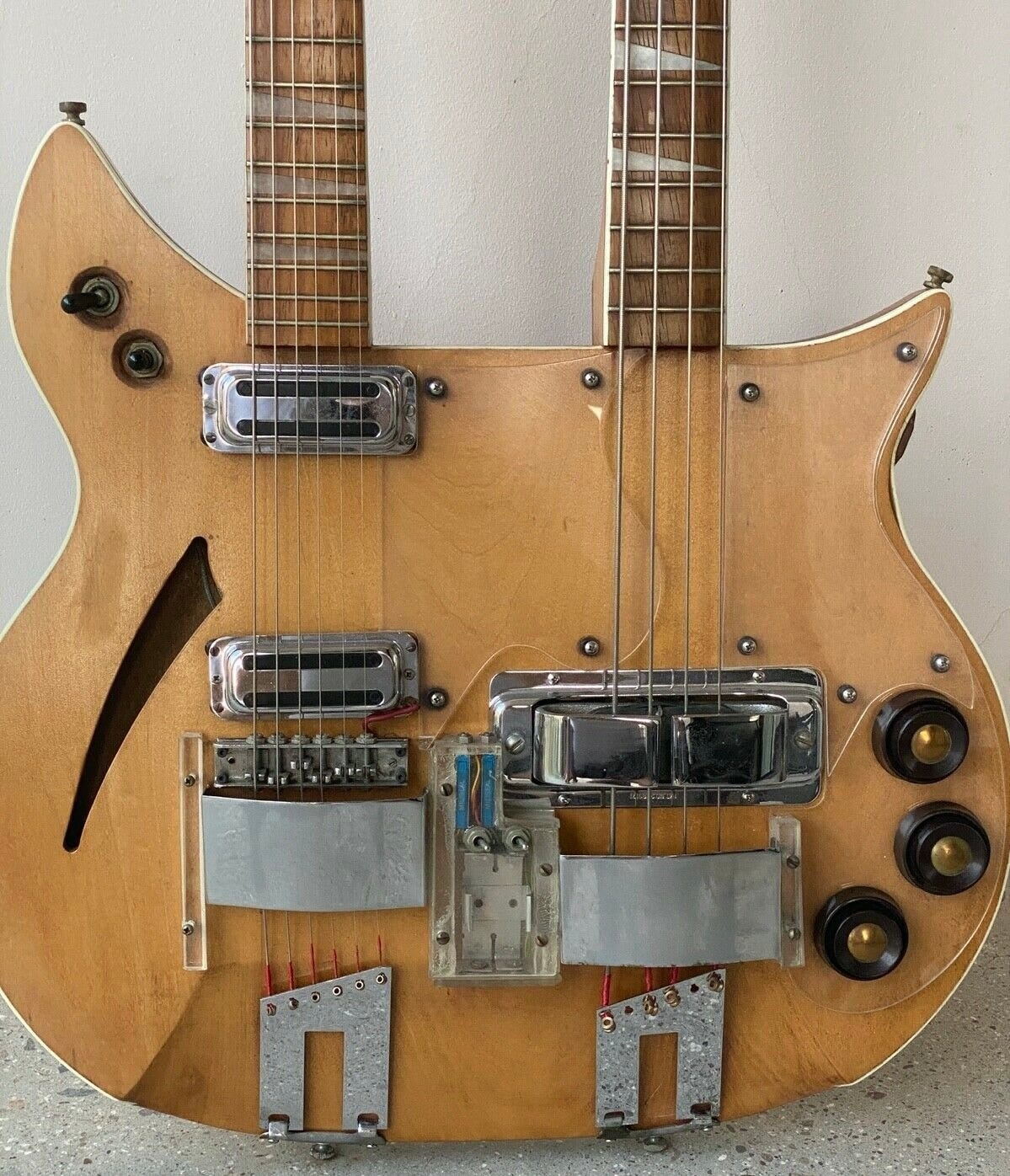
Well, kinda. What he actually got was an unfinished husk and a bag of hardware that he assembled himself. But what a husk! Check out the full body shot:

I mean, there’s a short scale bass and then there’s…whatever this is. Looking at where the nut is and where the bridge probably is, the bass scale can’t be more than an inch or so longer than the guitar’s standard 24.75” scale. And don’t even try and use the fret markers to figure out how many frets there are—madness lies that way (1, 3, 5, 8, 11, 13?). There are 16. I triple checked.
OK, let’s talk about what came from the factory: body husk, truss rod covers, tuners, pickups (two toasters for the guitar, one horseshoe for the bass), bridges (roller for the guitar), sliding bridge covers (with mutes), and trapeze tailpieces.
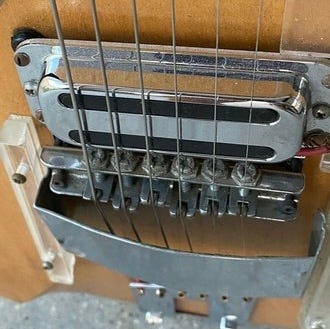
The top was five pieces, which makes sense given that semihollow-bodied guitar tops were three pieces at the time. There was only one large carved “ramp”, shared by both tailpieces. The back appears to be two pieces, center seamed. Both necks also appears to have a walnut heel cap.
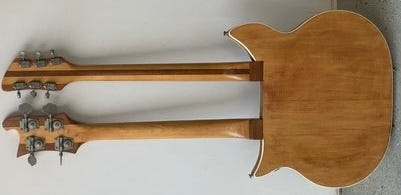
Clearly the 1.5” thick body was inspired by the new-for-1961 New Capri shape, only doubled to accommodate the extra neck. It had 360-style deluxe features—bound body and neck, triangle inlays—but oddly had no binding between the two necks on the back.
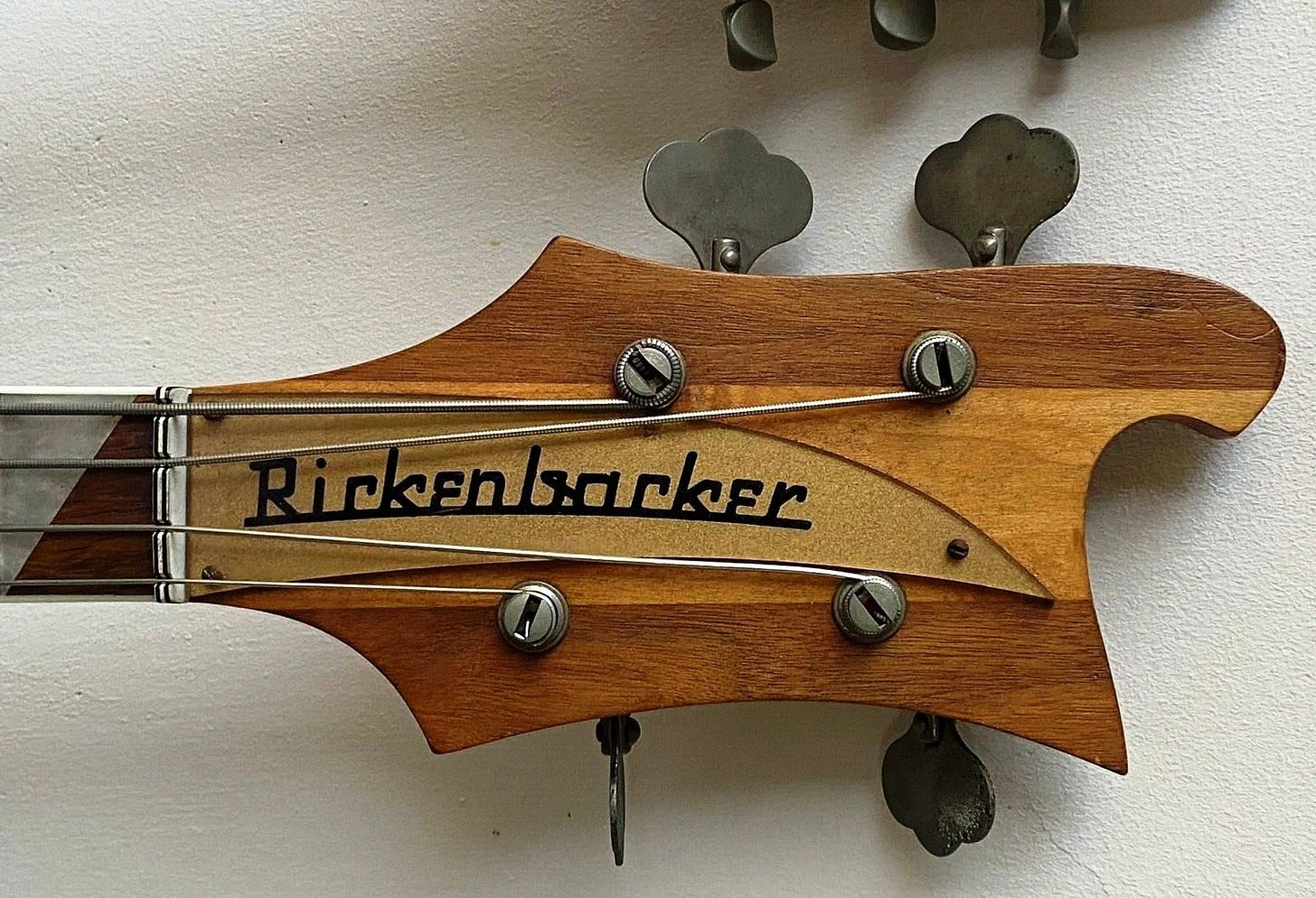
So that’s what Blackwell got from the factory. The rest was up to him. As far as controls go, there are three stacked-pot knobs—volume/tone for each pickup—and two toggle switches on the upper bout. One of those selects pickups on the guitar neck, and the other selects the neck. The guitar does feature a Rick-O-Sound output jack, but it is unclear how it is actually wired. The knobs are top-mounted through a custom plexiglass pickguard, and both necks have raised (by way of a grommet) plexiglass pickguards in the playing area.

There is also an aftermarket fuzztone unit between the bridges that was added later.
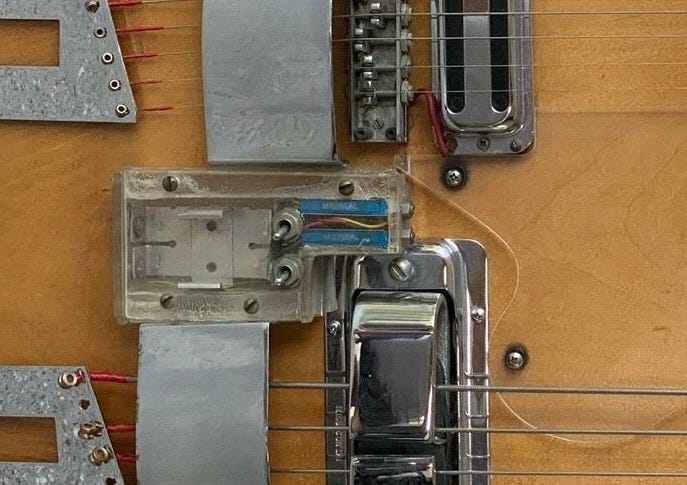
Now you may wonder how the guitar was physically wired—you’ll note the absence of the normal control cavity rout on the top, and none on the back. My guess is that everything was fished through either the large horseshoe pickup top rout or the slash soundhole. The toggle switches must have been a pain!
There are a couple other signs that the wiring was very much a DIY affair—note the ground wire running directly from the bridge pickup on the guitar neck and the fact that the horseshoe pickup was installed upside down!

Clearly nobody at Rickenbacker said “aha!” after the guitar was finished. The next doubleneck guitar wouldn’t be made until 1963—another custom order—leaving this guitar as an interesting historical footnote until “production” doubleneck guitars entered the line with the 362/12 in 1974 and the 4080 in 1975.
We’ll wrap up with a note for the pedants: “doubleneck”, “double-neck”, or “double neck”? Which is correct? If you look at the internet and at various producers’ literature you’ll find all three used. So I guess all three are technically correct? Rickenbacker themselves has used both “double neck” and “doubleneck” over the years. “Doubleneck” looks best to me, so that’s what I use!
Want to learn more about…everything else? Check out our handy site map to see what we’ve already covered. Got something you’d like to see covered? Drop it in the comments and we’ll add it to the queue.


Wow! Thats interesting to say the least. Cool article though, thank you👍
That's an odd bird. Great article as always. And there's 2bl-neck too!!